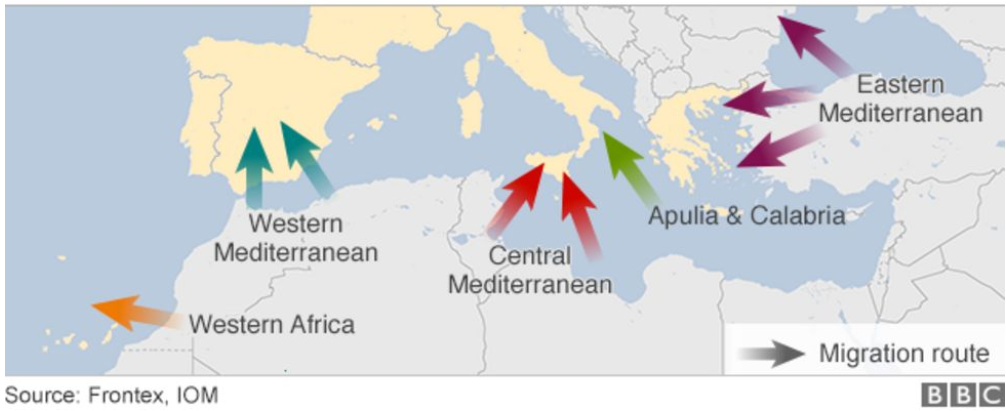Migrations in the Mediterranea…
페이지정보
글쓴이 지중해지역원 조회 10,159 조회 날짜 22-09-20 10:07내용
Migrations in the Mediterranean
Mona Farouk M. Ahmed (HK Professor, Institute for Mediterranean Studies)
The Mediterranean Sea witnessed many migrations through its routes linking the surrounding countries. The increase of unsettlement and economic crises in the south compared with the welfare and secure northern region of the Mediterranean contributes to intensifying this phenomenon increasing illegal migrations. The daily news of the world often include reports about tragic stories of those who lost their life during journeys of migrations across the Mediterranean Sea hoping for a better life on its other shore.
Among those tragedies, the world may not forget the picture of the Syrian toddler refugee, Alan Kurdi, drowned in the Mediterranean Sea in his way with his family fleeing the war in their homeland. Thus, those migrations across the Mediterranean includes many cases of refugees fleeing the dangerous status in their countries, and also other many cases of illegal migrations seeking the European life. Mixing the two types resulted sometimes in hostile attitude against the migrants coming through the Mediterranean including discrimination against them sometimes developed into racist and xenophobic attacks.
The following map shows the most dangerous routes of migration in the Mediterranean, as reported by a BBC News stating that the deadliest of them is the Central migration route from North Africa to Italy and Malta.

Source: https://www.bbc.com/news/world-europe-32387224
Examining the flow of migrations across the Mediterranean, we can see that the southern shore provides the main migration flows towards the EU in the Northern shore of the Mediterranean. Accordingly, it is understandable that the EU has the right to establish the legal framework regulating those migrations targeting the European lands. Thus, The EU established a system to manage the migratory flows and was constituted by the essential Schengen Agreements of 1985 eliminating the internal EU borders while strengthening its external borders. Since then, many measurements were taken to combat the illegal migrations in the Mediterranean region while declaring this as a priority for the EU. Those measurements include functioning with the aid of radars between European countries like Spain and the African coast.
Despite all these efforts, the recent news showed that within this year, 2022, there were more than 155 thousand recorded as irregular entries to the European Union across the Mediterranean Sea with an increase of almost 86% compared with last year. And this number does not include the Ukrainians who fled to the EU due to the war situation. Thus, the migratory pressures are highly increasing this year in Europe.
On the other hand, in addition to the increasing numbers of deaths witnessed in those migrations of the Mediterranean, many migrants are exposed to other dangers during those fatal journeys across the Mediterranean including extrajudicial killings, kidnapping, extortion, torture, sexual exploitation, forced labor, human trafficking, and other serious abuses. This fact raises questions about the need for more regulations to stop those fatal journeys before their onset.
References:
https://www.iemed.org/publication/migrations-in-the-mediterranean-region/
https://www.unhcr.org/596f4c4a7.pdf
https://www.bbc.com/news/world-europe-32387224
댓글목록
댓글이 없습니다
